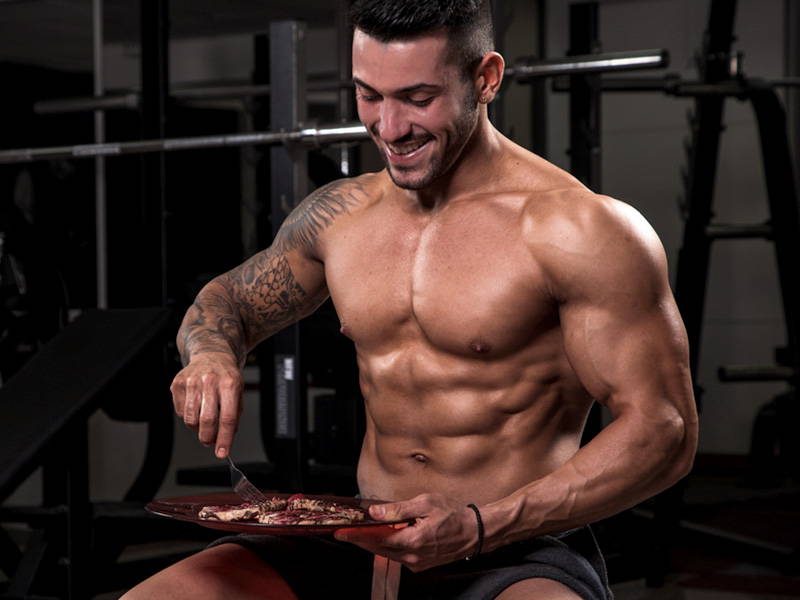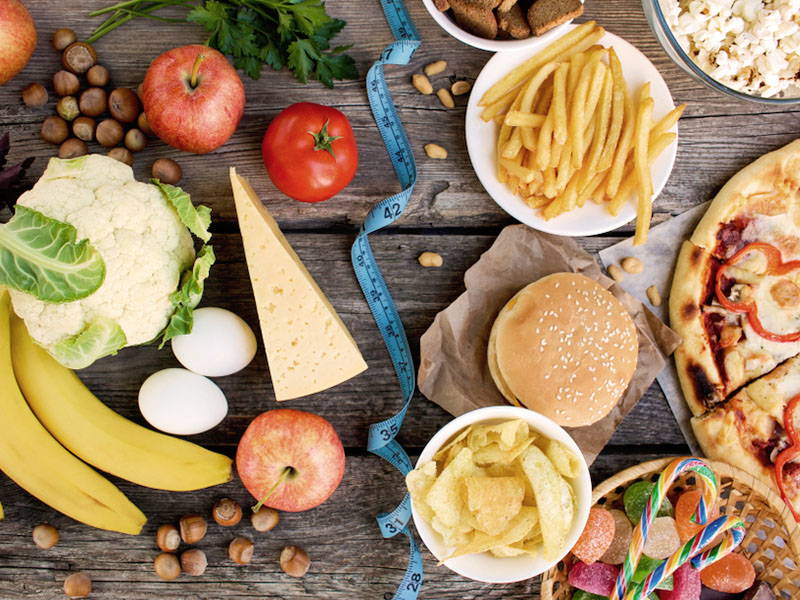
How To Bulk: Diet & Workout Guide
Key Takeaways
- Bulking means to increase calories to put on muscle mass and/or body fat.
- If your focus is on building muscle mass, clean bulking will be the best route to take. Eating whole, nutrient-dense foods will help you put on muscle without excess body fat.
- Supplements should enhance your diet, not be used as a substitute for nutritious foods.
- Working out when bulking up requires a consistent workout routine using progressive heavier weights. Reps and sets will vary based on the weight you’re lifting and what routine you choose.
Bulking and cutting are common terms in the bodybuilding industry, especially when competing.
When done right, both phases of your bodybuilding journey can provide impressive results. However, if you’re not careful, you can derail the process and lower your chances of reaching your goals.
Today, we’ll discuss what bulking is and how to tailor your diet and workouts for success.
What is Bulking?
What’s the meaning of bulking? This term is mostly used in the bodybuilding and fitness industry and it means to increase your caloric intake to gain weight. For most, the goal is to gain muscle while minimizing the amount of body fat gained.
When comparing bulking vs cutting, cutting is the exact opposite. Used before a big event or competition, cutting means to decrease calories to lose muscle and/or fat volume.

Bulking and cutting have been used in competitions for decades. Even Golden Era bodybuilders used these methods to get their bodies ready for the stage.
You may have also heard of the terms clean bulking vs dirty bulking. Also called lean bulking, clean bulking means to moderately increase calories while still eating healthy. Dirty bulking means to increase calories at a higher rate and eating any foods – even junk foods.
Today, we will teach you how to clean bulk using a healthy, sustainable diet and workout plan. Dirty bulkers may see faster results, but they typically have more body fat to lose during the next phase.
Bulking: Diet Guide
When bulking up, the biggest mistake people make is not eating enough food. This is especially true for skinny people, those known as “hard gainers.”
Not eating enough food will certainly cause you to not gain fat, but you also won’t build muscle.
Determining Calories Needed to Bulk up
To find out how many calories are needed for bulking up, you need a calculator to determine your TDEE. Your total daily energy expenditure is how many calories you burn throughout the day. Read more about TDEE and how to calculate it here.

Figuring out how many calories you should eat each day is the best thing you can do when bulking. It can help you achieve pretty much any fitness goal, including cutting, losing body fat, and building muscle.
When calculating the requirements needed for bulking, some are surprised by the number of calories needed. Many in the bulking phase are eating upwards of 3,500 plus calories a day, even women.
Researchers suggest the following macronutrient breakdown when bulking:
- Protein: 25 – 30%
- Fat: 15 – 20%
- Carbohydrates: 55 – 60%
In the bulking phase, experts suggest an increase of roughly 15 percent in calories above your TDEE. During the cutting phase, you should be consuming about 15 percent fewer calories daily.
To achieve the results you desire, you must count calories. This is necessary to ensure you’re getting enough calories and the right ratio of macronutrients.
There are different ways you can go about your diet plan. Some find success with carb cycling while others enjoy the benefits of intermittent fasting.

Would you rather not deal with making your own meal plans or figuring out what to eat? Consider using a meal planning or meal prep service, which can take a lot of the guesswork out of your dietary needs.
Clean bulking is the best way to proceed through this phase in your fitness journey. It will help you build muscle without increasing your body fat too much. Plus, you’ll feel better eating nutrient-dense foods rather than high calorie, low-quality foods.
Foods to Include in your Bulking Diet

Here are some examples of the foods you should include in your bulking diet:
- Meats: Lean cuts of red meat and pork, skinless poultry, whole eggs.
- Seafood: Lobster, scallops, salmon, cod, tilapia, tuna, shrimp, oysters, clams.
- Dairy: Cottage cheese, full-fat yogurt and cheese, milk, butter or ghee.
- Vegetables: Beets, carrots, broccoli, yams, rutabaga, arugula, asparagus, cucumber, peppers, kale, mushrooms, collard greens, arrowroot, sweet potatoes, jicama.
- Fruits: Pineapple, oranges, apples, pears, bananas, berries, grapes, kiwi, pomegranate, avocado.
- Whole grains: Breads, oats, quinoa, sorghum, barley, popcorn, rice.
- Nuts/seeds/oils/butters: Almond, sunflower seeds, chia seeds, flaxseed, hemp seed, walnuts, avocado oil, olive oil.
- Legumes and beans: Lentils, black beans, chickpeas, fava beans, peas, peanuts.
- Drinks: Unsweetened teas (especially green tea), water, coffee.
Foods to Limit in your Bulking Diet

When bulking, you’ll want to avoid these foods and drinks:
- Processed and fried foods: Hot dogs, sugary breakfast cereals, white bread, processed cheese, deli meat, fast food, prepackaged meals.
- Foods with added sugar: Any foods that have added sugar on the nutrition label and in the ingredients should be avoided. Most commonly baked goods, candy, and desserts.
- Drinks: Just like foods with added sugar, avoid drinks with added sugar as well. Alcohol should also be avoided as it inhibits growth of muscle mass. Diet drinks should also be avoided, as the artificial sweeteners can cause some health issues or prevent fat loss.
If you are working out regularly, there is little harm in occasionally treating yourself while bulking up. However, eating the wrong food or drinking the wrong beverages could derail your bulking goals.
Supplements to Consider
Depending on your body type and body composition, you may have an easier time bulking than others. If you’re considered a hard gainer or have difficulty losing body fat, supplements may help when bulking.
Supplementing is pretty normal in the bodybuilding world, and pretty much all competitors use them in some form. Here are the best ones to use with your bulking diet and workout plan:
- Protein: Protein is one of the key building blocks to help build muscle mass. Protein powder isn’t a substitute for high-protein foods in your diet but can help ensure you reach your protein macronutrient goal.
- BCAAs: Branch-chain amino acids are usually used in the cutting phase, however, can be a great addition for hard gainers. BCAAs are best taken in between meals or when you’re doing cardio sessions.
- Creatine monohydrate: Lift more weight and workout longer and harder when supplementing with creatine. Not all forms of creatine are created equal, and creatine monohydrate is the best form for bodybuilding.
- Caffeine: A popular way to fuel workouts is by using caffeine to improve focus and provide lasting energy. Vintage Blast™ includes caffeine, vitamins, and minerals using a holistic formula without sugars, carbs, and calories.
Supplements should never be used in place of food to reach your goals. Always consider the number of calories, fat, protein, and carbs when choosing a supplement.
Now, let’s discuss the best workout plan to use when determining how to bulk up.
Bulking: Workout Guide
Though your diet will determine most of your bulking success, you can’t ignore your workout plan.

The easiest way to improve your muscle mass without putting on too much body fat is progressive overload. By progressively increasing the weight you lift and your reps and sets, you’ll be able to build muscle fast.
Your workout schedule will be determined by how much time you have to spend in the gym each week. If you prefer to work out often, say five to six times per week, focus on each muscle group separately.
Your schedule for any given week could look like this:
- Monday: Chest
- Tuesday: Lower body
- Wednesday: Back
- Thursday: Abs
- Friday: Shoulders and arms
Working out this way guarantees one solid workout for each muscle group. However, if you don’t have as much time to spend, you may want to go with the next option.
Here, you’ll be working out two to three times per week using full-body workouts. Focusing on compound exercise will get you in and out with a great muscle-building workout.

The best compound exercises will build strength and muscle:
These exercises have variations that increase difficulty as you progress. Once you’ve got the squat down, challenge yourself to do the pistol squat. Once you’ve mastered the push up, add in wide grip and/or diamond push ups.
If you’ve never tried one of these exercises before, try them out first with bodyweight only. Once you’ve got the form down, you’ll be ready to add weight.
Progressively increasing the weight will keep you challenged while building muscle and strength. Your new clean eating diet will fuel your body properly and the supplements will fill in the gaps.
How Many Reps and Sets?
The number of reps and sets may vary as your body changes during your bulking journey. Start with at least three sets per exercise. You’ll want to get at least five reps per set as well.
The heavier the weight you’re lifting, the lower the reps you’ll need per set. Lower weights require more reps and sets to get the same results. This will gain endurance but not set you up as well for muscle building.
Focus on progressively increasing your weight each time you do an exercise. The heavier weights will break down the muscle fibers more quickly, providing a better workout in less time.

As you continue to increase your weight limit, consider using a spotter, especially in overhead exercises. They can be sure your form isn’t lacking and also assist with the load if it proves to be too much.
You want to avoid injury at all costs, as that will completely derail your goal of bulking.
Let’s do a quick recap of your “How to bulk: diet and workout guide”:
- Figure out your calories and macros
- Eat clean, nutrient-dense food
- Supplement to complement your diet, not replace
- Determine your workout schedule
- Build workouts based on your schedule
- Ensure progressive overload through heavier weights and increase reps and sets
After a couple of months of solid bulking action, you will notice a difference in your physique. You’ll have lost any unnecessary body fat while improving your muscle mass.

Track your progress by posing for before and after photos and taking body measurements. This way you’ll be able to really see your results, even if the scale doesn’t budge as much as you thought.
The Bottom Line
When it comes to the bulking phase, some people will do a dirty bulk to load up on calories. While this can work, you may not feel your best and it could slow your progress at removing body fat.
Instead, focus on clean eating and working out a few times a week in the gym. Limit cardio when bulking, as it tends to burn lean muscle, the opposite of what you’re going for.
As you increase the weights in your workout, consider using a spotter to avoid injury. Take progress photos and measurements to get an in-depth view of your bulking success.
Have you traveled along the bulking journey? Do you have any tips you can share with those looking to bulk up? Let us know what worked and what didn’t in the comments below.









